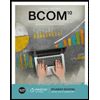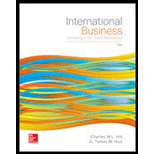
Case summary:
Company G, in the year 2013, found itself attacked by politicians on Country E. They revealed that this company adopted strategies to avoid paying company income tax. According to the data from 2011, Company G did not pay its corporate income tax, amounting to $2 billion out of $9.8 billion income. This amount was transferred to Company S in Country B, where there is no corporate income tax.
In 2011, Company G paid $6 million tax out of $2.5 billion income in Country UKG stating that Company G has not done anything wrong, and was following the rule written by politicians. The company follows the strategy DI to reduce tax liability. This strategy is the main advantage for the company.
Company G has followed another strategy, DS; in this strategy, the products move between Union E members so Country I does not charge tax on these products. Country N charges some amount as fees to transfer from this country’s branch office to Country B’s branch office.
All these activities are said to be legal because they follow different tax rules in different countries. The company uses the strategy of different tax rules in different countries to reduce its tax.
Characters in the case:
Company G,
Company S,
Country E,
Country B,
Country UKG,
Union E,
Country I,
Country N.
To determine: Country B’s gain from Company G’s operations.
Introduction:
Tax is a compulsory payment that should be made by the company or by an individual to the government for various public expenditures.
Want to see the full answer?
Check out a sample textbook solution
Chapter 20 Solutions
International Business: Competing in the Global Marketplace
- I need the correct answer to this general accounting problem using the standard accounting approach.arrow_forwardPlease show me the correct way to solve this financial accounting problem with accurate methods.arrow_forwardCan you solve this general accounting problem using accurate calculation methods?arrow_forward
- I need assistance with this general accounting question using appropriate principles.arrow_forwardgiven answer with calculationarrow_forwardAccounting records are maintained on a computer using proprietarysoftware.Your assistant is a newly recruited business graduate who has done an accounting course buthas no practical experience.Because of the small size of the company there is limited opportunity for segregation ofduties. You decide, as in previous years, that the appropriate audit strategy is to obtainevidence primarily through the performance of substantive procedures. You also plan toperform the audit around the computer as the proprietary software is known to be reliable anddetails of all transactions and balances can be readily printed out.On arriving at the company's premises in December 2019 to perform the final audit on the 31October 2019 financial statements, you obtain a copy of the year end bank reconciliationprepared by the bookkeeper and checked by the managing director. This is reproduced below. Balance per bank statement 31 October 2019: $36752.00Deposits outstanding:30 October…arrow_forward
- Can you solve this general accounting question with the appropriate accounting analysis techniques?arrow_forwardOn January 3, 2020, Lennox Corporation acquired equipment for $120,000. The estimated life of the equipment is 5 years, and the estimated residual value is $2,000. What is the amount of depreciation expense for 2021, if the company uses the double-declining-balance method of depreciation?arrow_forwardI am searching for the most suitable approach to this financial accounting problem with valid standards.arrow_forward
- If Radian Enterprises has revenue = $160 and variable cost = 40% of revenue, then contribution margin = $92. a. True b. Falsearrow_forwardName and explain two risk assessment tools that WSS could use to evaluate the risks of itscurrent meter-reading system and the proposed smart meter system.arrow_forwardI need the correct answer to this general accounting problem using the standard accounting approach.arrow_forward
 BUSN 11 Introduction to Business Student EditionBusinessISBN:9781337407137Author:KellyPublisher:Cengage Learning
BUSN 11 Introduction to Business Student EditionBusinessISBN:9781337407137Author:KellyPublisher:Cengage Learning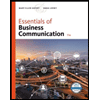 Essentials of Business Communication (MindTap Cou...BusinessISBN:9781337386494Author:Mary Ellen Guffey, Dana LoewyPublisher:Cengage Learning
Essentials of Business Communication (MindTap Cou...BusinessISBN:9781337386494Author:Mary Ellen Guffey, Dana LoewyPublisher:Cengage Learning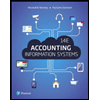 Accounting Information Systems (14th Edition)BusinessISBN:9780134474021Author:Marshall B. Romney, Paul J. SteinbartPublisher:PEARSON
Accounting Information Systems (14th Edition)BusinessISBN:9780134474021Author:Marshall B. Romney, Paul J. SteinbartPublisher:PEARSON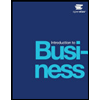
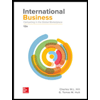 International Business: Competing in the Global M...BusinessISBN:9781259929441Author:Charles W. L. Hill Dr, G. Tomas M. HultPublisher:McGraw-Hill Education
International Business: Competing in the Global M...BusinessISBN:9781259929441Author:Charles W. L. Hill Dr, G. Tomas M. HultPublisher:McGraw-Hill Education